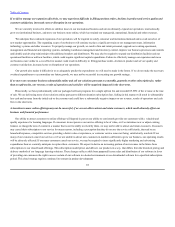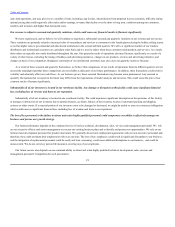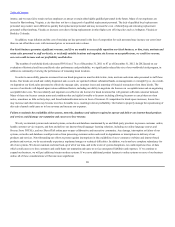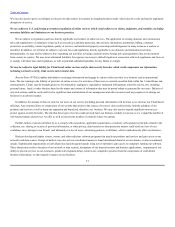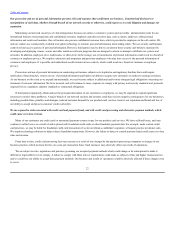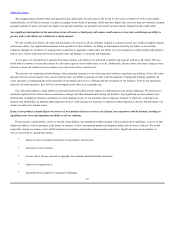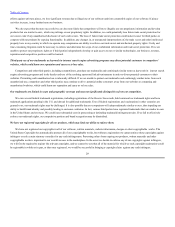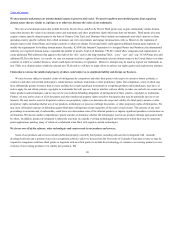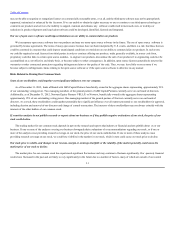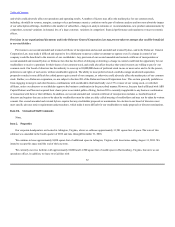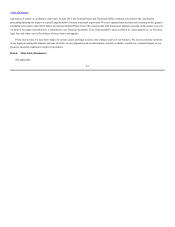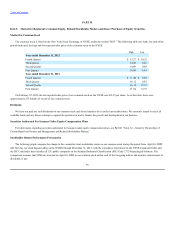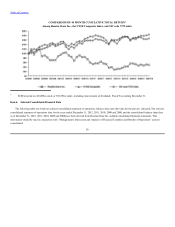Rosetta Stone 2012 Annual Report Download - page 28
Download and view the complete annual report
Please find page 28 of the 2012 Rosetta Stone annual report below. You can navigate through the pages in the report by either clicking on the pages listed below, or by using the keyword search tool below to find specific information within the annual report.
Table of Contents
business as well as our conclusions as to the adequacy of our available sources of capital could change significantly. Any of these events or
circumstances could result in significant additional funding needs, requiring us to raise additional capital. We cannot predict the timing or amount of any
such capital requirements at this time. If financing is not available on satisfactory terms, or at all, we may be unable to expand our business or to develop
new business at the rate desired and our results of operations may suffer.
We may make acquisitions or enter into joint ventures and strategic alliances as part of our long-term business strategy. Such transactions involve
significant challenges and risks including that the transaction does not advance our business strategy, that we do not realize a satisfactory return on our
investment, that we experience difficulty integrating new employees, business systems, and technology, diversion of management's attention from our
other businesses or that we acquire undiscovered liabilities such as patent infringement claims or violations of the U.S. Foreign Corrupt Practices Act
and similar worldwide anti-bribery laws. It may take longer than expected to realize the full benefits, such as increased revenue, enhanced efficiencies,
or market share, or those benefits may ultimately be smaller than anticipated, or may not be realized. These events could harm our operating results or
financial condition.
Our financial statements are prepared in accordance with generally accepted accounting principles adopted in the United States ("GAAP") and are
subject to interpretation by the SEC and the Financial Accounting Standards Board ("FASB"). A change in GAAP or interpretations of GAAP can
have a negative effect on our reported financial results and even retroactively affect previously reported results. The FASB is currently working together
with the International Accounting Standards Board ("IASB") on several projects to align accounting principles internationally. These efforts by the
FASB and IASB could change the accounting principles applicable to us and result in materially worse financial results for us in areas including, but
not limited to, principles for recognizing revenue.
Under GAAP, we review our goodwill and indefinite lived intangible assets for impairment at least annually and when there are changes in
circumstances. Factors that may be considered a change in circumstances include a decline in stock price and market capitalization, future cash flows and
slower growth rates in our industry. We may therefore be required to record a significant charge to earnings in our financial statements during the period
in which any impairment of our goodwill or indefinite lived intangible assets is determined, resulting in a negative effect on our results of operations.
We are subject to tax in multiple U.S. and foreign tax jurisdictions. If certain foreign earnings previously treated as permanently reinvested are
repatriated, the related U.S. tax liability may be reduced by any foreign income taxes paid on these earnings. Unanticipated changes in our tax rates
could affect our future results of operations. Our future effective tax rates could be unfavorably affected by changes in the tax rates in jurisdictions
where our income is earned or by changes in the valuation of our deferred tax assets and liabilities.
26




